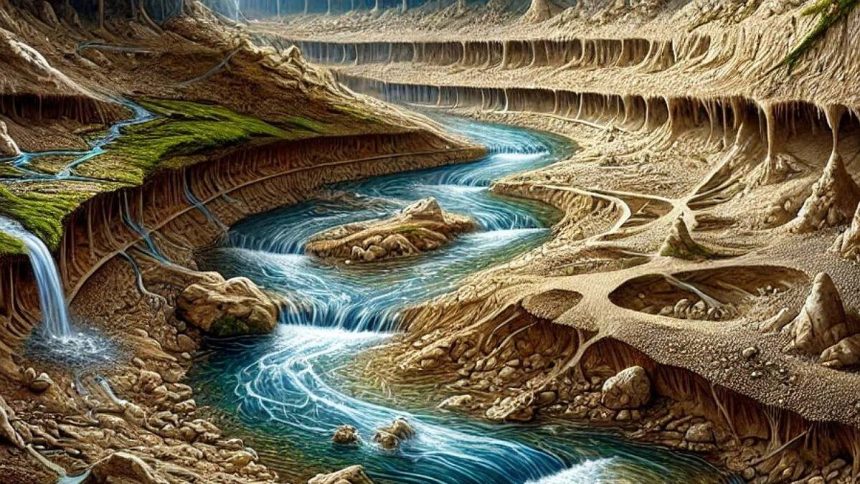When we think of rivers, we typically imagine them flowing above the earth’s surface. However, some rivers flow beneath the ground, a concept that might seem unusual to many. In reality, underground rivers exist in various parts of the world, carving their way through layers of rock beneath our feet.
What Are Underground Rivers?
Yes, it’s true—there are rivers flowing under the ground! These subterranean watercourses are as fascinating as they are mysterious, often shaping the land from below. But how are these underground rivers formed?
Formation of Underground Rivers
There are several reasons why rivers form underground. One of the most common causes is the permeability of the earth’s surface in some regions. In areas where the ground is porous, rainwater can slowly seep into the soil, making its way down to impermeable layers of rock. Once there, the trapped water accumulates, and under pressure from the surface water above, it starts to flow underground, forming a river.
Another reason for the formation of underground rivers is related to chemical reactions, especially in regions with limestone. When rainwater—slightly acidic due to dissolved carbon dioxide—falls on limestone rocks, a chemical reaction occurs that slowly dissolves the rock. Over time, the limestone’s porous, honeycomb-like structure allows water to flow through it, gradually creating channels and, eventually, a full-fledged underground river.
Underground Rivers and Limestone Erosion
As rainwater continues to flow, it widens the cracks and channels in the surrounding rocks, creating paths for itself. Over time, these paths become wider, forming underground streams that can flow for miles before emerging on the surface. These rivers often surface again in certain places and, like surface rivers, eventually merge with the sea.
Some of these underground rivers are powered by powerful springs found within mountains. When the pressure becomes too great, the water finds an escape route through the rocks, flowing underground until it resurfaces.
Famous Underground Rivers Around the World
Some underground rivers flow beneath the earth for extended distances, while others only flow underground for short sections before reappearing on the surface. One such example is the Rhône River in France, which has sections that flow underground. Another famous underground river is found in Somerset, England, attracting geologists and tourists alike with its unique subterranean path.
The Challenges of Exploring Underground Rivers
Studying underground rivers is no easy task. In many places, these rivers flow through narrow, inaccessible paths that make exploration difficult for humans. Geologists have devised alternative methods for tracking these rivers. One such technique involves adding dye to the river where it is visible above ground. The movement of the colored water helps scientists trace the river’s underground journey and determine where it resurfaces.
Underground rivers are a hidden yet integral part of Earth’s hydrological system. Whether formed by chemical reactions in limestone regions or the pressure of surface water, these rivers continue to shape the landscape from beneath. Though difficult to study, they offer a fascinating glimpse into the hidden processes that occur deep within the Earth’s crust.




